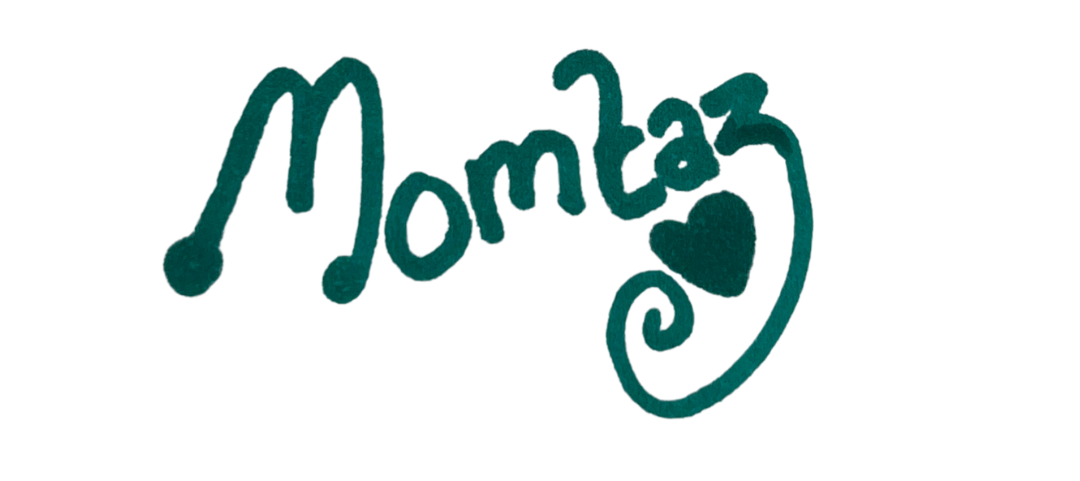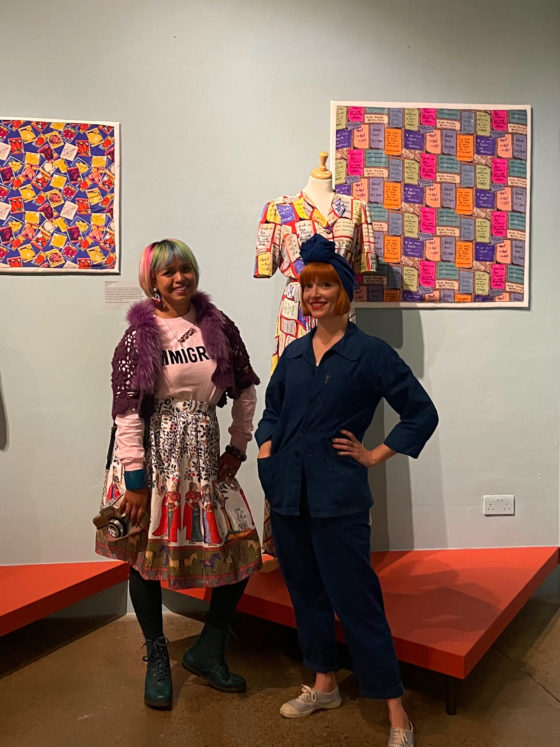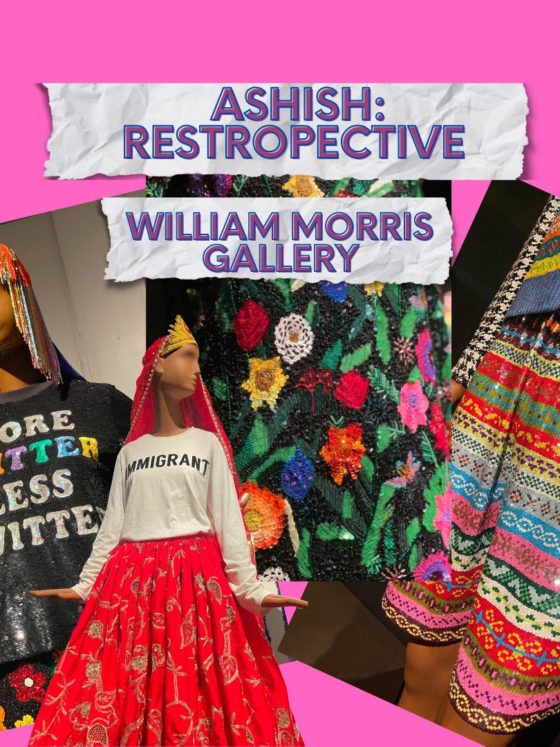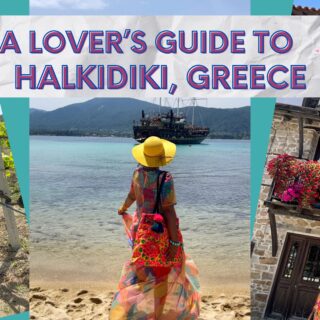EXHIBITION: Outlaws: Fashion Renegades of 80s London at Fashion & Textile Museum

1980. The year that British fashion and culture of an alternative persuasion finally got acknowledged thanks to the emergence of style magazines The Face and i-D.
Maybe that’s why I was born in the same year? 80s London is the era I was meant to be part of and perhaps that’s why I felt so at home the moment I stepped foot into Outlaws: Fashion Renegades of 80s London. It’s the new exhibition at the Fashion and Textile Museum in London and it’s my favourite one to date.
DIY fashion, music and art was a philosophy that guided this community
Celebrating the queer underground scene and fashion of 80s London, centring on Taboo, a club night run by Designer and Performance Artist Leigh Bowery, the exhibition captures a moment in time; 1985/6. When the only thing that mattered was dressing up and going Out Out.
Park any notion you may have of the stereotypical aesthetic the 1980s is so synonymous with. We’re not talking neon legwarmers and commercial pop. This is the subversive, individualistic, statement-making DIY side of 80s London fashion where the desire for originality superseded the mainstream yuppy culture of materialism. DIY fashion, music and art was a philosophy that guided this community of creatives and while there is tragedy in the tale, there was also joy on the dancefloor.

I had the honour of getting a tour of the exhibition on its opening day by its curators Martin Green and NJ Stevenson alongside my friend Maur Valance who was a renegade and 80s London club personality. But, before I share some of their insights; let me start at the beginning with an extraordinary person…
Thank goodness for the renegades of 80s London – championed by Leigh Bowery
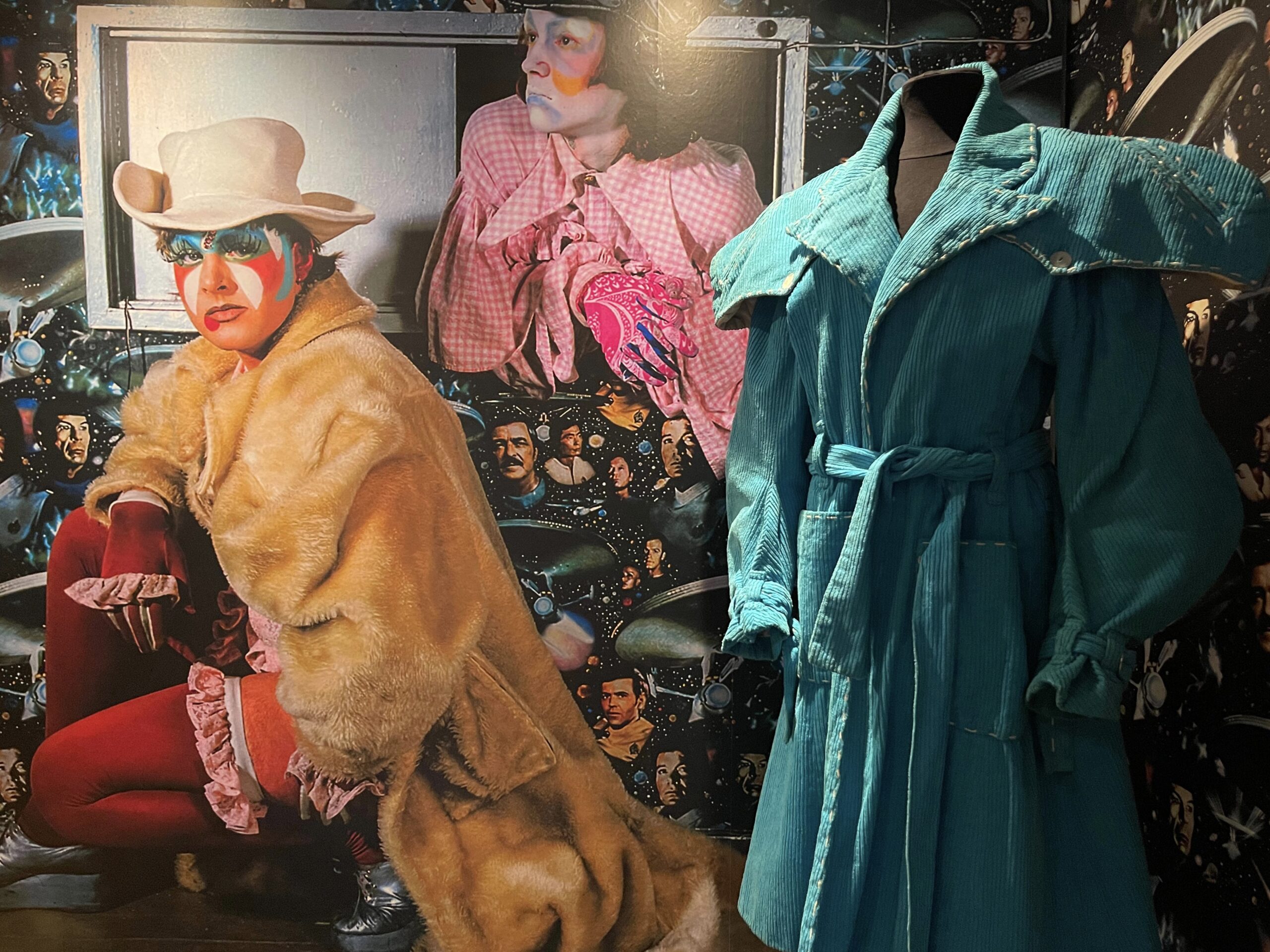
When I was at school in the 90s I encountered Leigh Bowery. I was utterly struck by the fact he looked and sounded like nobody else I had seen in my life. I found him disturbing and intriguing at the same time. Alternative artists don’t get more prolific than Leigh and his one-of-a-kind personality was a firm fixture of 80s London.
Outlaws: Fashion Renegades of 80s London opens with a recreation of Leigh and his friend Trojan’s flat. It features a cabinet filled with memorabilia, and what Martin Green called ‘80s social media’; “photocopies, magazines, badges, prints – that’s how everyone found out about what was happening.”
The room features mannequins wearing clothes Leigh made and designed and this was typical of many clubbers at the time as NJ explained: “Lots of young designers were just working from home on a sewing machine. At that point, production wasn’t on their minds. They were just making stuff to sell to a few people.”
Curating culture – where the renegades of 80s London found their style
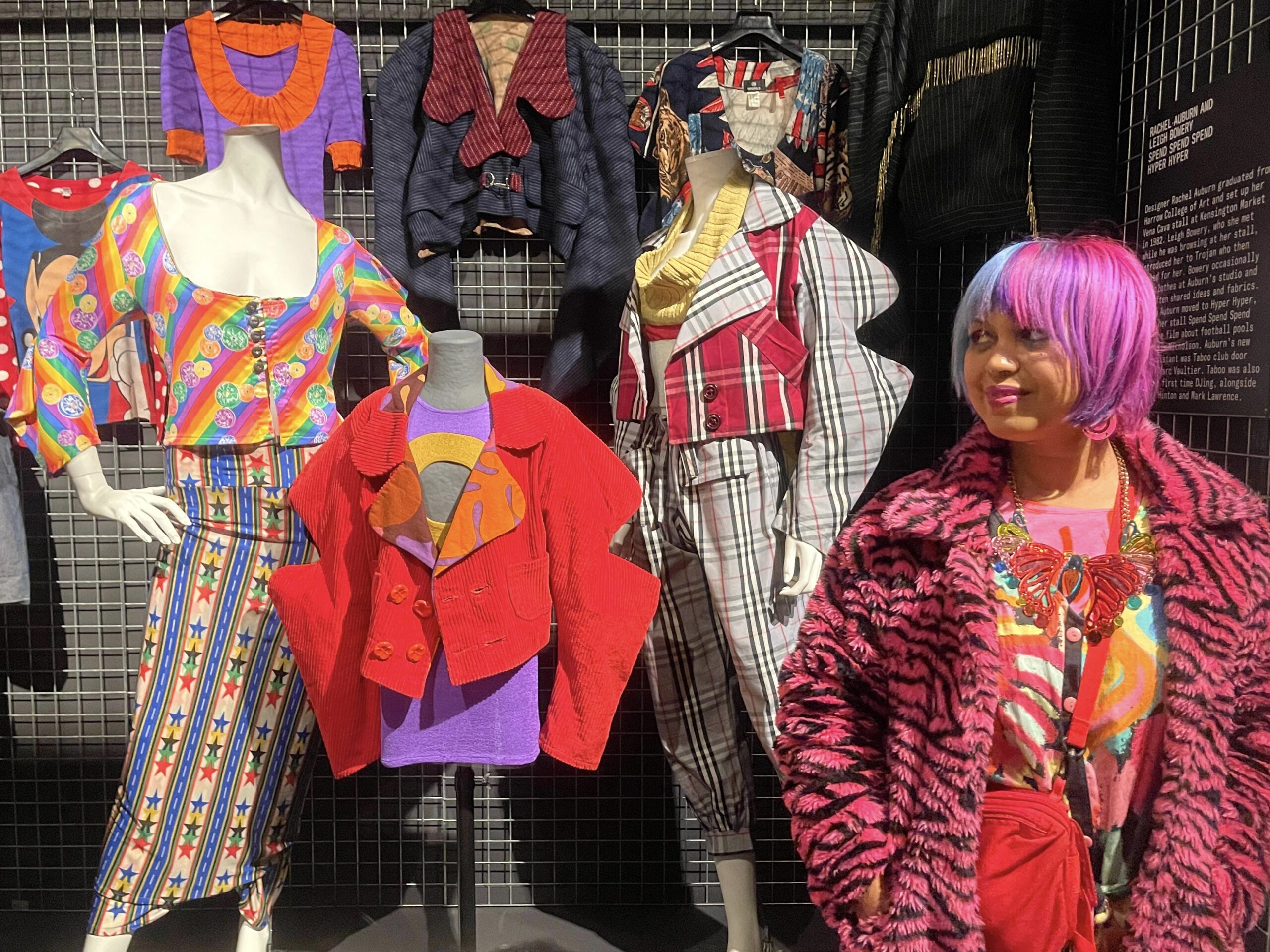
A key section in the exhibition is a replica of some of the stalls that were found in Kensington Market in 80s London. In keeping with the club’s underground reputation, these stalls were a secret for those in the know. Many of the stall holders were new designers and graduates. Selling their work gave them economic freedom and the space to explore and express themselves, pushing the boundaries of creativity, gender and artistic vision. For shoppers, these markets gave outsiders, misfits and rebels a place to feed their desire to be authentically themselves.
Stalls holders included Wayne Hemingway and his partner, whose brand eventually became Red of Dead, Pam Hogg, Rachel Auburn who also DJed at Taboo and BodyMap, of which Maur was a big fan.

All the stall, he talked me through its appeal and the pieces he owned, wore and donated to the exhibition: “In the 80s BodyMap sold clothes at Camden Market and it was a clubland secret. They used to sell at really expensive shops like Browns but if you were in the know you could go to Camden market and get something special and it would be a lot cheaper which was great when I was young. I’ve kept all of these, they’ve been in the loft for 40 years and now they’re out on display. It just shows how fantastic their prints and cuts were. And they were the first people to use jerseys and lycra in clothing. You could wear them out in clubs you could wear them in the day and put them in the washing machine which was even better!” Maur’s pieces in the exhibition stall include a backless t-shirt, a top with matching socks, an over-sized nylon shirt, a dress and a swimsuit.
A taste of Taboo

Taboo wasn’t the only club that catered to the needs of the queer community in 80s London, others included Sacrosanct and Kinky Gerlinky. For those who weren’t there and missed out on witnessing the vibe for themselves, the centre of the exhibition is a recreation of a typical night out on the dancefloor complete with disco ball. Made up of mannequins, each one wears an original 1980s outfit, modelled on real people, including my friend Maur.
This section doesn’t feel like an exhibition, but genuinely like you’re walking into the club. Every mannequin has so much character that I felt transported to Taboo, a fly on the wall witnessing the debauchery on the dancefloor. Martin explained more about the atmosphere. “It was still illegal to be gay until you were 21. People were thrown out of their homes and they gravitated to London to try and find a safe place and family. These clubs connected everyone. They started dressing up, and their outfits became more elaborate. Everyone was in tremendous competition with each other.”
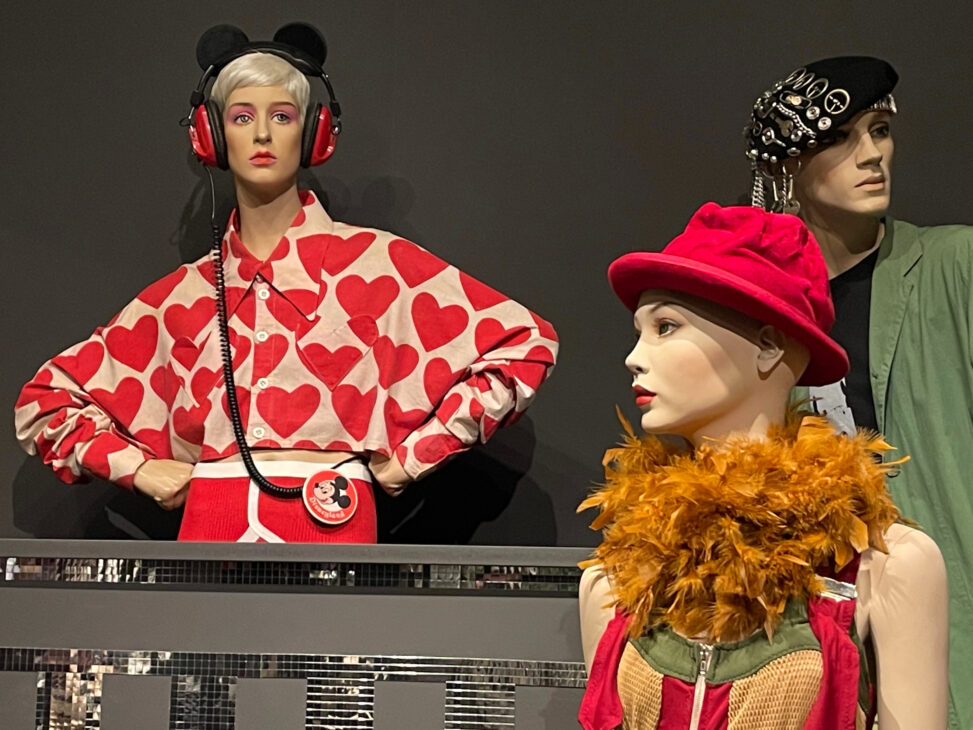
One of the fascinating aspects of the 80s London club scene was how it had international impact before it was properly recognised in the UK. This was thanks to New Yorker Susanna Bartsch who was instrumental in the club scene there. She curated an exhibition in New York featuring 10 outfits she picked up in London by designers including Elmaz Huseyin, BodyMap and Annie le Paz and catapulted them to stardom.
London Fashion Week didn’t start in the UK until 1983 so when the club scene in mid-80s London became so influential, the interest in London flared up leading to it becoming one of the fashion capitals of the world, with people now eager to come to LFW. Of course, subcultures and communities have always made a home in London evident in past exhibitions at the museum, but it was the 80s that solidified it.
“Dressing up as if your life depends on it, otherwise don’t bother.”
Maur Valance, Club Personality
Listening to Maur’s story of getting ready to go out felt like a rite of passage that I too had followed. I was at university in Brighton in the late ‘90s/early 2000s, went clubbing several times a week and would spend the best part of the day getting ready; so I knew what he was talking about!

He recalls: “I would spend all day and plan the outfits for the whole week. We had to look really good for the nightclub. It couldn’t just be thrown together. This is the thing about the clubs I went to in 80s London, it was all about dressing up. Dressing up as if your life depends on it, otherwise don’t bother.”
Sustainable street style

Upstairs, the exhibition delves into clubwear designers whose pieces were worn by celebrities. There’s also a section on the dancewear Leigh created for Michael Clarke and a replica of the windows of Browns, where some of the market stall holders went on to be stocked.

A Remake and Remodel section tells the story of the designers in 80s London who made clothes from found items and salvaged materials including The House of Beauty and Culture which was a design collective. It features items made from tea towels, mudlarking treasures and cut up vinyl records.
There’s also an acknowledgement of the image makers, an important part of the club culture world as NJ explains: “We wanted to show that it wasn’t just the designers, but the stylists, make-up artists, magazines, graphics, imagery, video and youth culture TV that were all part of the scene.”
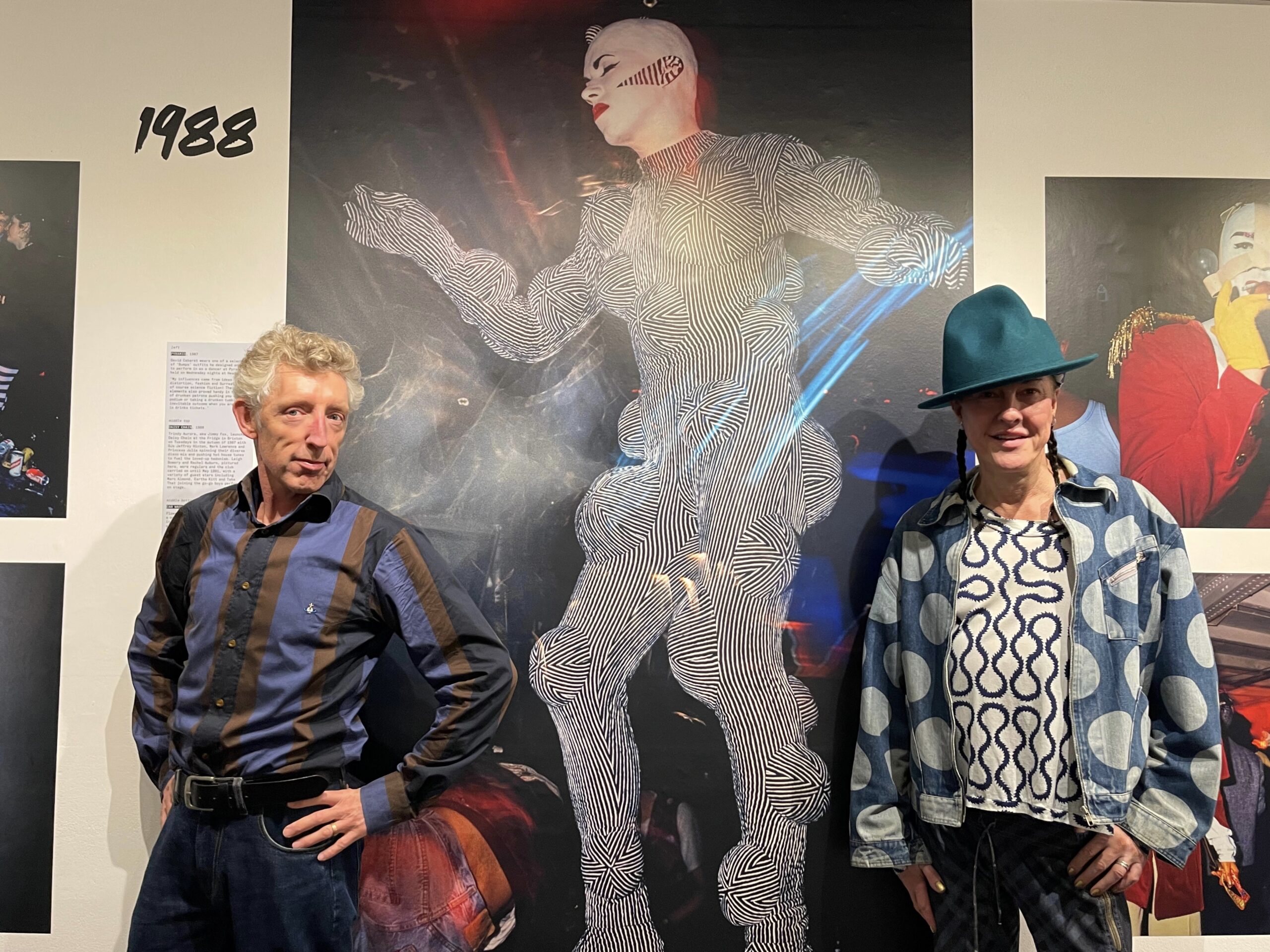
Finally, the exhibition ends with a glimpse into what a night out looked like thanks to the photography of Dave Swindells who got a job as Night Life Editor at Time Out in 1986 and who spent his career going out and capturing the action. It’s the perfect way to end a perfect exhibition.
I was beaming the whole time I was mooching around the museum. It’s such a celebratory exhibition, yet the tragedy of the time is referenced too. The AIDs epidemic of the 80s stole the lives of many members of the community and their memory is just as important as the memories of the people that lived to share their tales in the exhibition.
Outlaws: Fashion Renegades of 80s London is on at the Fashion and Textile Museum from 4October 2024 – 9 March 2025.
Book tickets at www.fashiontextilemuseum.org
